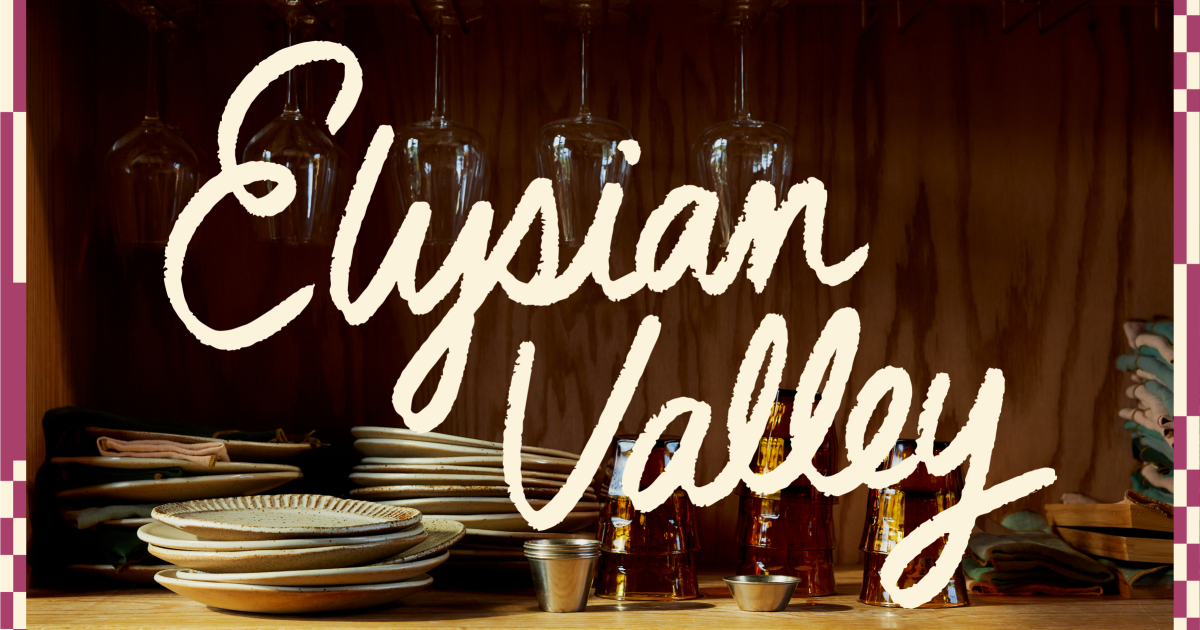Nestled between the Golden State Freeway and the Los Angeles River, Elysian Valley — also known as Frogtown because of the western toads that once inundated the residential streets — often has been described as an “isolated” urban community.
Geographically speaking, that makes sense. But if you spend time in the 3-mile-long neighborhood, where businesses and homes butt against one another, you’ll see people from all over town flocking to the river-adjacent area. And for good reason.
“We used to feel like we were this somewhat remote outpost,” said architect Tracy Stone, president of the Elysian Valley Arts Collective, who has lived there for 20 years. “You have to come here deliberately. When outward-facing places like Wax Paper opened in 2016, I thought, ‘Who will come here?’ Much to my amazement and delight, they proved it’s possible.”
Indeed. On a recent Saturday morning, a long line of bicyclists, couples with dogs and families waited patiently for coffee at La Colombe Coffee Roasters on the Elysian Valley Bicycle & Pedestrian Path, a 7-mile stretch along the L.A. River that serves as a sidewalk for the neighborhood.

Get to know Los Angeles through the places that bring it to life. From restaurants to shops to outdoor spaces, here’s what to discover now.
A few blocks down the street, in an old machine shop, the line is equally long at Justine Hernandez’s vegan bakery, Just What I Kneaded, which specializes in sweet and savory pastries.
“We love it here,” said Hernandez, who opened Justine’s Wine Bar behind her bakery in August. “It is such a creative hub, and the neighbors are lovely. Sometimes it feels like Sesame Street in the best way.”
Later that day, more than 35 vendors set up at First Impressions Dance Studio, Frogtown Brewery, the Pot Shop, Spoke Cafe and Singulier & vintage for the monthly Frogtown Flea Crawl, which debuted in April. Co-organized by Analise Anderson and James Andrews, the walkable event highlights small local brands.
“There’s nowhere else you can find a river, trees and so much beauty,” Anderson said of the unique shopping experience. “There is a feeling that all of these vendors genuinely love what they do. People who come to our market feel a great sense of community.”
Once known for the small factories that provided working-class jobs for the predominantly Latino and Filipino immigrants, Elysian Valley’s reputation as an industrial neighborhood changed when factories closed, and many artists and nonprofit organizations moved in due to the affordable rent.
When the L.A. River Revitalization Corp. announced a new master plan to redevelop the Los Angeles River in 2015, the neighborhood changed further as rents soared, developers added luxury lofts and high-rise apartments, and artists moved out.
So did many immigrant families.
In an oral history published in The Times in 2015, longtime Elysian Valley resident Daniel Paredes shared how his family was displaced four times when their rent increased. He also weighed in on the challenges of the green gentrification of the river. “Sometimes it feels like things that are ‘green’ don’t take into account the things that people of color may be concerned about,” he said.
It’s a trend that continues today. Although Bauer Pottery, which lost its lease in Atwater in September, plans to open its new showroom on Blake Street the first week in February, the sustainable sewing and production company Suay Sew Shop, which has been in Elysian Valley since 2017, will move to the Arts District in downtown Los Angeles this month after being priced out of its space. Kruegermann Pickles & Sauerkraut shut down its factory at the end of 2022 after 58 years in the neighborhood.
Despite the neighborhood’s growing pains — parking is an issue, and the neighbors have advocated for DASH bus service — Stone has hope for its future.
“Even with the many newcomers, I can walk into Spoke at any time of day and see a neighbor,” she said. “I can also walk out my door and have a choice of four or five amazing restaurants within a few blocks. It makes the experience of living here rich and wonderful. One of the things I love about the business community in Elysian Valley is the majority of them came here deliberately and want to be a part of the community. A wealth of nonprofits operate in this neighborhood and do great work. Many businesses offer neighborhood discounts and genuinely want to be good neighbors.”
That sense of connection is what makes Elysian Valley so welcoming. Whether you’re sipping a custom flight at Frogtown Brewery, refilling your bike tires for free at Spoke or perusing pop-up art exhibits at the Frogtown Artwalk, it’s a feeling that will stay with you long after you leave.
Love where you live? Tell us which neighborhood we should feature next.
What’s included in this guide
Anyone who’s lived in a major metropolis can tell you that neighborhoods are a tricky thing. They’re eternally malleable and evoke sociological questions around how we place our homes, our neighbors and our communities within a wider tapestry. In the name of neighborly generosity, we included gems that may linger outside of technical parameters. Instead of leaning into stark definitions, we hope to celebrate all of the places that make us love where we live.

